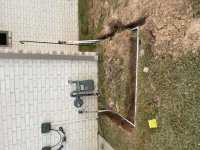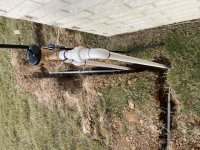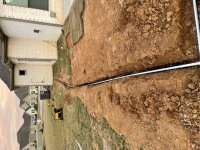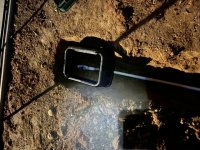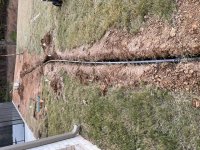The autofill instructions stated that BFP must be installed 12in above the autofill canister.
That is correct. They're not supposed to be in a box in the dirt. Yours is quite high, and Matt identified the problem with that. Just drive in some PVC pipe as stakes and tie your PVC pipes to those. Use 1" or even 1.5" PVC or ABS and that'll be rigid enough and rot/rust-proof. Cut the bottoms into a V to help with driving them in.
Personally, I don't like unions. If they give you any trouble, next time leave them out. If you have to swap out the BFP, you have plenty of pipe to be able to cut it, replace the BFP and then reassemble using PVC couplers. You could do that a dozen times before you'd run out of room for couplers. Unions have o-rings and o-rings are more prone to failure than PVC glue joints. But for now, it's fine.
Leave the copper alone. That was a good call. I've been sweating copper for decades and still only get a joint right about half the time!
While the suggestions to tie your auto-fill line to your irrigation controller do have some merit, it would have been significant overkill. Again, you made a good call. It'll work fine as is. You might need to turn off that line for some sort of maintenance issue someday, but a twist of the valve will be all that is needed. Unless you're some sort of pariah, a neighbor could do that for you if it had to be done while you're away.
I am all for over-complicating my pool system, I'm pretty much the poster-boy for it around here, but don't recommend it to others. Keep it simple. You did great.
Oh, be sure to insulate the above ground pipes. That'll keep the sun off of them (UV compromises PVC), and it might come in handy if you have a cold-snap before you winterize. There are many ways to do this. Here's one way:
Edit: I first missed your bit about using the unions to remove the BFP. I suppose. I don't know anything about winterizing (where I live we don't), so will defer to your experience with that. But if I had to guess I'd say blowing out the BFP when you blow out that line for winter would have been fine.


